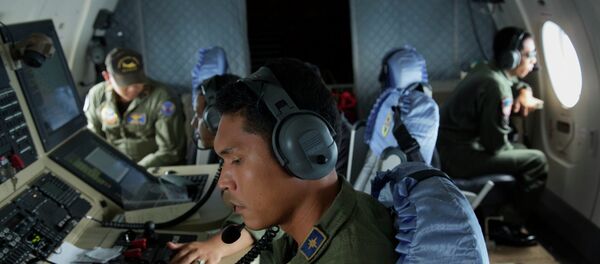This has raised new questions about what had happened on board the ill-fated AirAsia plane.
A cabin crew member who works for Russia’s national airliner Aeroflot told Sputnik that the discovery of a passenger in a life vest is a very important fact in determining the nature of an accident, but it still remains to be seen how many more passengers will be found in life jackets.
Usually, she said on condition of anonymity, pilots do not instantly inform passengers when a problem is discovered. They need at least 2-3 minutes to assess a possible failure. The aircrafts are usually not brand new, and a fault signal might simply turn out to be due to an electrical glitch.
In the event of real danger, pilots make an announcement to the passengers. But, she stressed, they only do it in the event of real trouble, in order to avoid causing panic on board.
The discovery of a passenger in a life vest might mean that the crew had enough time to prepare the passengers. However, it remains to be seen how many more people are found in life jackets, as a single person could have simply put one on quickly.
She also supposed that the plane crew was preparing for a water landing, but that it probably went wrong due to bad weather conditions.
Indonesian search and rescue officials are believed to have honed in on the remains of the missing AirAsia Flight QZ8501 plane using sonar imaging showing the fuselage, lying upside down, at the bottom of the Java Sea.
The plane is said to be in the Karimata Strait, in the Java Sea off the coast of Borneo, lying at a depth of 24-30 meters (78-98 feet).
Seven bodies have been recovered from the sea, Reuters says. One of them appears to be a uniformed flight attendant, the BBC reported.
Some of the bodies were fully clothed, which could indicate the Airbus A320-200 was intact when it hit the water. This would support one theory, that it suffered an aerodynamic stall.
Earlier on Wednesday, Reuters said that one of the main theories is that the plane suffered an aerodynamic stall before plunging into the water.
Online discussions among aviation experts reveal that Malaysian radar data shows that the plane may have been climbing too slowly, resulting in the stall.
The crew had sought clearance to increase their altitude in order to avoid bad weather shortly before all contact with the plane was lost.



